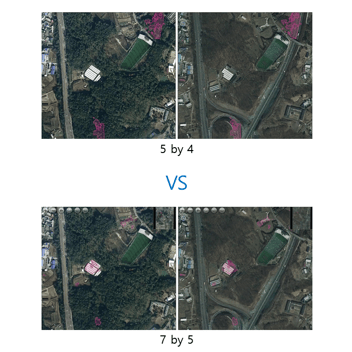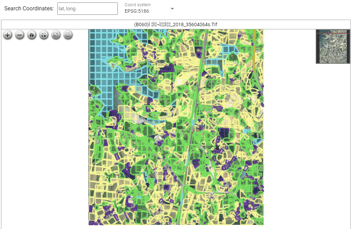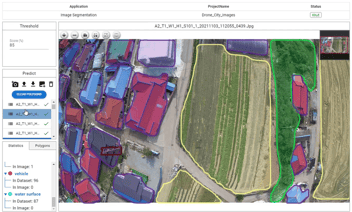Semantic Segmentation for Rice Paddies
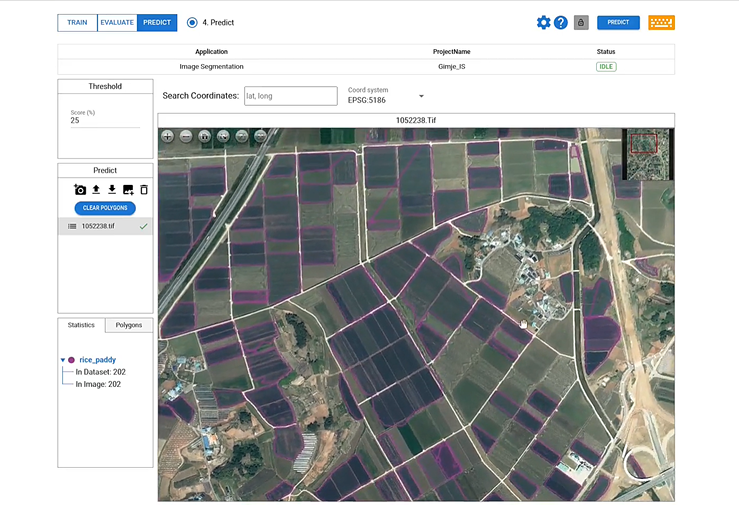
Discover the wealth of insights that can be gleaned from extracting rice fields from high-resolution remote sensing images, including aerial and satellite photos.
Understanding the Importance of Rice Paddies
Rice paddies play a crucial role in food production and agricultural economies around the world. These flooded fields are specifically designed for rice cultivation, providing the necessary conditions for the crop to thrive. Rice is a staple food for billions of people, making rice paddies essential for global food security.
In addition to food production, rice paddies also have significant ecological importance. They serve as habitats for numerous aquatic species and provide critical wetland ecosystems. Rice cultivation also helps to mitigate climate change by acting as a carbon sink, absorbing large amounts of atmospheric CO2.
Understanding the importance of rice paddies is essential for sustainable agricultural practices and environmental conservation. By segmenting rice paddies in high-resolution aerial photographs, we can gain valuable insights into their distribution, health, and growth, enabling us to make informed decisions for their management and conservation.
The Advantages of High-Resolution Aerial Photographs
High-resolution aerial photographs offer a wealth of advantages when it comes to segmenting rice paddies. These images provide a detailed view of the landscape, allowing for accurate identification and delineation of individual rice fields. The high level of spatial resolution enables us to capture even the smallest rice paddies, ensuring comprehensive coverage of the cultivated area.
Moreover, aerial photographs provide a synoptic view of large agricultural landscapes, making it easier to analyze patterns and distribution of rice paddies at a regional or even global scale. This broad perspective helps in understanding the larger context of rice cultivation and its impact on land use and food production.
Additionally, high-resolution aerial photographs can be acquired at regular intervals, allowing for temporal analysis of rice paddy dynamics. Changes in the size, shape, and health of rice fields over time can be monitored, providing valuable data for assessing the effectiveness of agricultural practices and identifying areas of improvement.
Challenges of applying machine vision technologies to high-resolution images
Applying machine vision technologies to high-resolution aerial photographs poses several challenges. The large size and high complexity of these images require advanced computational algorithms and processing power to handle the data effectively. Processing high-resolution images can be computationally intensive and time-consuming, requiring specialized technology and software.
Furthermore, the diverse appearance and variability of rice paddies, including differences in color, texture, and growth stage, present challenges for developing robust segmentation techniques. Machine learning algorithms, such as deep neural networks, can be employed to overcome these challenges by learning from large annotated datasets and adapting to different rice paddy characteristics.
What Deep Block Did
In our recent endeavor, we used the power of Deep Block's cutting-edge ultra-high-resolution image analysis technology and no-code machine learning model development environment to create an innovative AI model. This remarkable model specializes in detecting unharvested rice paddies within ultra-high-resolution aerial photos. Through precise training, we have successfully trained our semantic segmentation AI to exclusively identify unharvested rice paddies.
While our AI model has achieved remarkable accuracy, our efforts were somewhat hindered by the unavailability of higher-resolution aerial photos from the Korean government. Had we been able to access higher-resolution images, we could have achieved even greater precision in segmenting the rice paddies and identifying rice paddies under attack by plant-hoppers. Unfortunately, the government's decision not to release higher-resolution aerial photos prevented us from obtaining more precise intelligence.
Despite this setback, our work in developing this rice paddy segmentation AI model represents a significant step forward in the field. By leveraging the incredible capabilities of Deep Block's technology, we have paved the way for more accurate and efficient analysis of rice paddies, ultimately contributing to the advancement of crop yield prediction.
What We Could DO
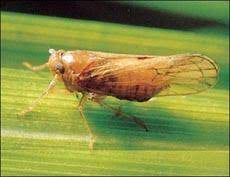
Rice planthoppers, notorious pests that have a significant impact on rice yields, are predominantly found in Asia, particularly in China and Southeast Asia.
As summer arrives, these insects make their way across the sea and reach the southern region of Korea. Feasting on rice plants, they bring along pests and diseases that can reduce rice production by almost 50%.
While satellite photos are unable to differentiate rice fields affected by rice planthoppers, aerial and drone photos prove to be invaluable in identifying yellowed rice fields caused by these insects.
The photo below shows a rice field damaged by rice planthoppers.
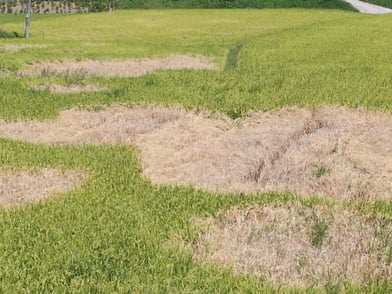
Deep Block's advanced image segmentation technology can be applied to ultra-high-resolution images, allowing for the extraction of areas within rice paddies that have fallen victim to rice planthoppers.
Unfortunately, the government does not provide us with access to such high-resolution photos, limiting the precision of our analysis. Nonetheless, the AI model we have developed has the capability to process high-resolution aerial photos effectively.
Applications and Benefits of Rice Paddy Segmentation
The segmentation of rice paddies in high-resolution aerial photographs has numerous applications and benefits. It provides valuable data for land use planning and agricultural zoning, helping policymakers and land managers make informed decisions about resource allocation and infrastructure development.
Furthermore, rice paddy segmentation can support precision agriculture practices by enabling targeted interventions and optimizing the use of fertilizers, water, and pesticides. By identifying areas of varying productivity and crop health, farmers can apply inputs more efficiently, reducing costs and minimizing environmental impacts.
Segmentation of rice paddies also facilitates the monitoring of compliance with land use regulations and environmental conservation policies. It allows for the assessment of changes in rice cultivation practices, such as the expansion or contraction of paddy areas, and their impact on natural habitats and water resources.
Furthermore, the segmentation of rice paddies not only aids in understanding their distribution and health but also has the potential to revolutionize crop yield prediction. Currently, companies like Cargill are already engaged in this work, but with Deep Block's cutting-edge technology, the segmentation of farmland can be done more efficiently and accurately using aerial and drone photos.
This has significant implications for quantitative funds and food corporations, as they can leverage Deep Block's capabilities to make more precise predictions of rice yield. By doing so, they can maximize their profits from grain futures investments.
Overall, the segmentation of rice paddies in high-resolution aerial photographs plays a crucial role in improving our understanding of these important agricultural systems, crop yield prediction, and ensuring food security for a growing global population.



